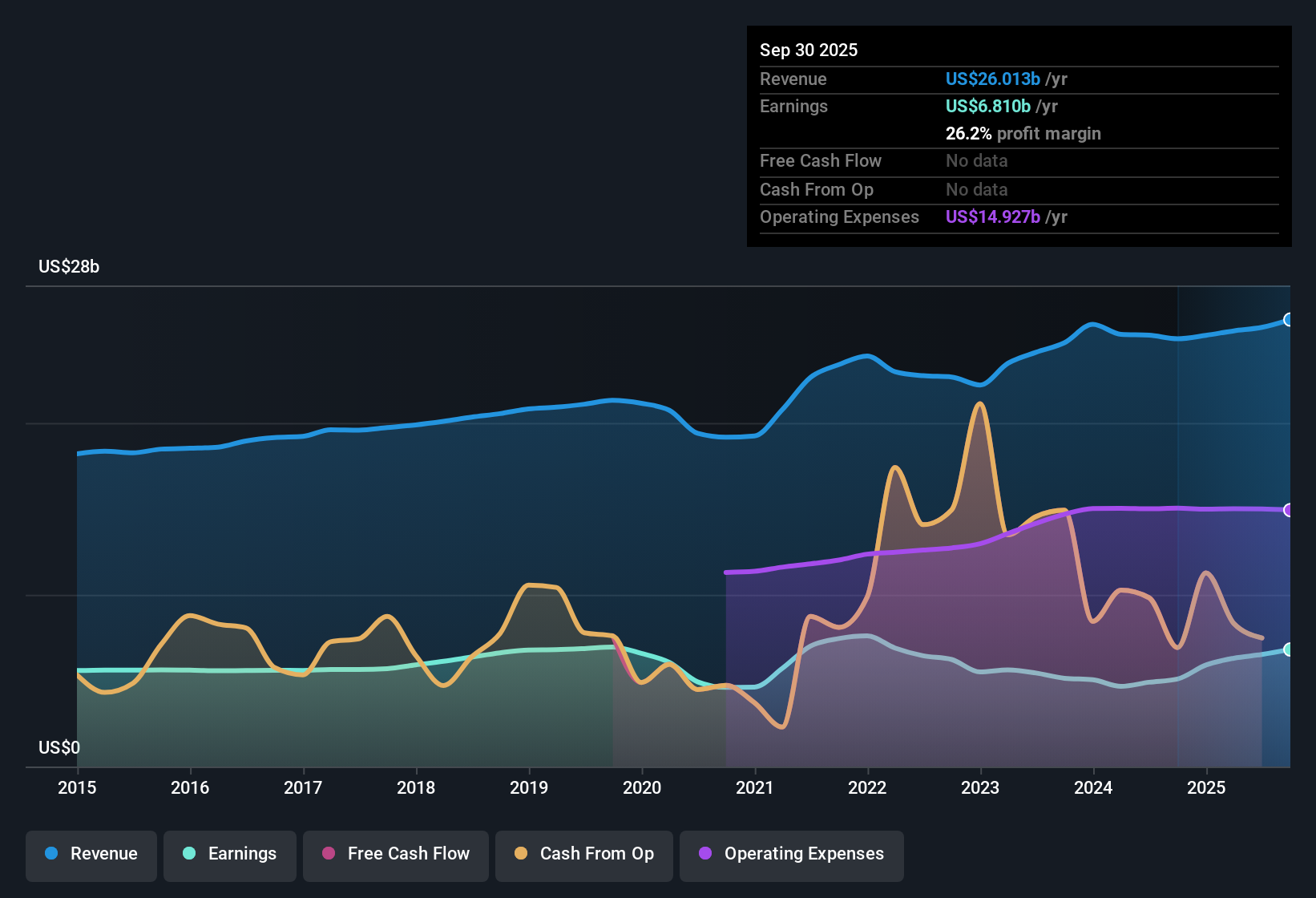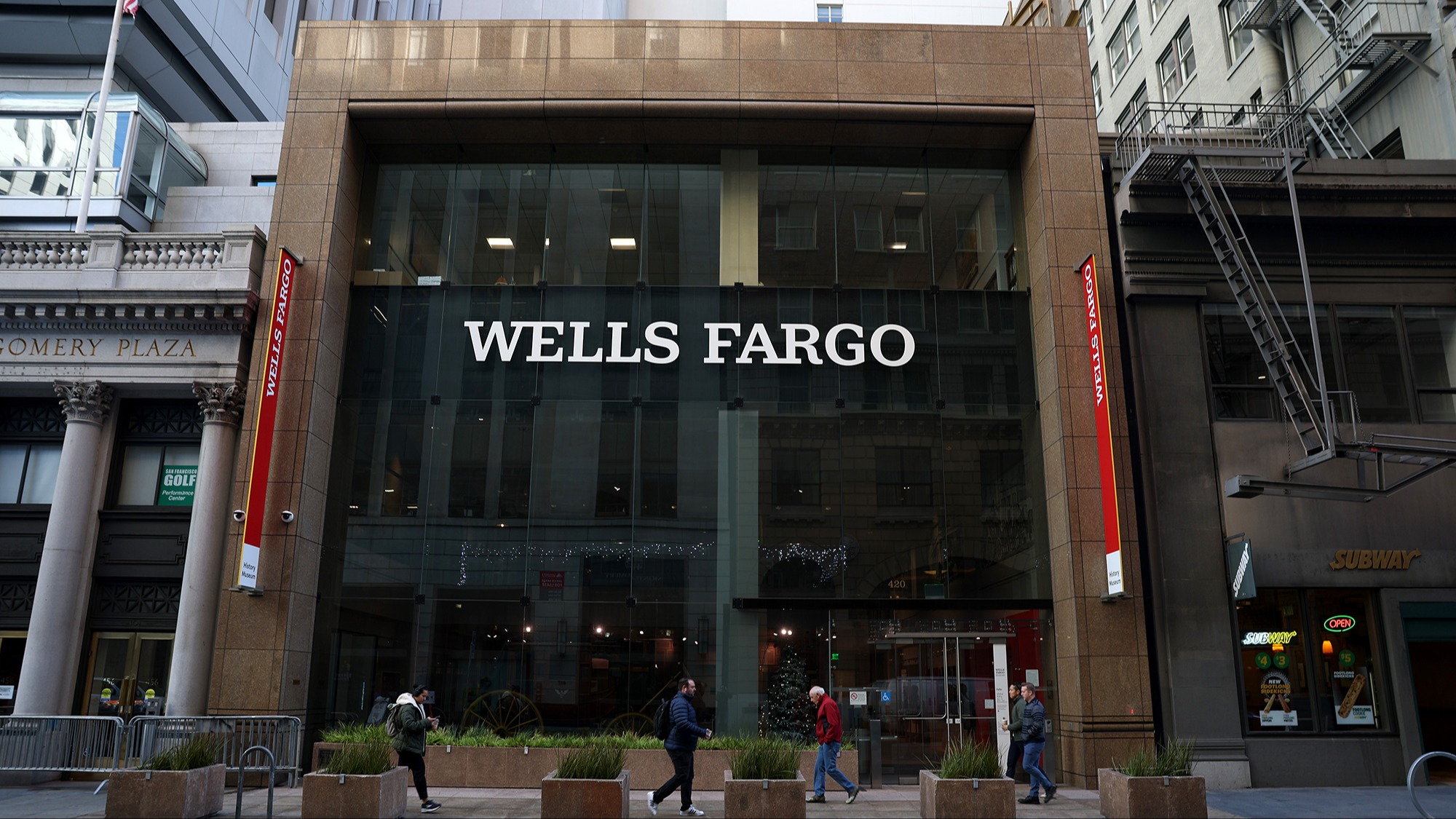-
Earnings Per Share (EPS): $1.11
-
Net Income: $1.8 billion
-
Fee Revenue Growth: 4.6% year over year
-
Return on Tangible Common Equity: 18%
-
Return on Average Assets: 1.08%
-
Efficiency Ratio: High 50s
-
Total Net Revenue: $7 billion
-
Ending Assets: $686 billion
-
CET1 Capital Ratio: 10.7%
-
Net Interest Income: $4.08 billion
-
Non-Interest Income: $2.9 billion
-
Non-Interest Expense: $4.18 billion
-
Non-Performing Assets Ratio: 0.44%
-
Net Charge-Off Ratio: 0.59%
-
Allowance for Credit Losses: $7.9 billion
-
Average Deposits: $503 billion
-
Average Loans: $379 billion
-
Investment Securities Portfolio: $174 billion
Release Date: July 17, 2025
For the complete transcript of the earnings call, please refer to the full earnings call transcript.
-
U.S. Bancorp (NYSE:USB) reported strong year-over-year EPS growth of approximately 13%, demonstrating robust financial performance.
-
The company achieved a 4.6% year-over-year increase in total fee revenue, reflecting broad-based strength across its diversified fee income businesses.
-
U.S. Bancorp delivered 250 basis points of year-over-year positive operating leverage, marking the fourth consecutive quarter of revenue growth outpacing expense growth.
-
The company maintained stable asset quality trends and credit metrics, with capital levels well above regulatory capital minimums.
-
U.S. Bancorp strategically repositioned its balance sheet by divesting approximately $6 billion in mortgage and auto loans, optimizing for stronger growth and deeper client relationships.
-
Net interest margin declined by 6 basis points sequentially, with half of the decline attributed to temporary factors.
-
The competitive deposit environment led to elevated deposit pricing pressures, impacting net interest income.
-
Corporate and government spend was muted this quarter, reflecting caution around economic uncertainty.
-
The company faced challenges in achieving its medium-term target of a 3% net interest margin, with current market conditions affecting progress.
-
Despite positive financial results, U.S. Bancorp’s stock experienced a decline, indicating potential investor concerns about the sustainability of growth and strategic initiatives.
Q: Can you discuss the net interest margin (NIM) dynamics and what factors could influence its trajectory? A: John Stern, CFO, explained that the NIM decline was partly due to transitory factors related to loan sales. He expects sequential net interest income growth in the third and fourth quarters, driven by strategic actions, fixed asset repricing, and loan growth, particularly in C&I and credit card portfolios. The goal remains to achieve a 3% NIM over the medium term.
Q: How are you managing expenses to achieve your operating leverage targets, and is there a risk of underinvestment? A: John Stern, CFO, emphasized that the company is self-funding its initiatives and investments, leveraging productivity improvements and technology enhancements. Gunjan Kedia, CEO, added that the company is committed to maintaining a streamlined business mix and investing in future growth, supported by significant digital investments over the past five years.
Q: What is driving the strong growth in C&I loans, and how are you funding this growth? A: John Stern, CFO, noted that C&I growth is broad-based, with contributions from ABS lending, small business, and middle market expansion. The company is focusing on consumer deposits, particularly through its Bank Smartly product, which has shown strong client acquisition and multiservice client statistics.
Q: How do you view the sustainability of your financial targets, and what is needed to create shareholder value? A: Gunjan Kedia, CEO, stated that the 200 basis points of positive operating leverage is a healthy target, and the company is focused on consistent delivery against medium-term targets. The opportunities for revenue growth are real, and the company is confident that sustained performance will positively impact the stock.
Q: Can you provide more details on the strategic sale of mortgage and auto loans and its impact on the balance sheet? A: John Stern, CFO, explained that the sale of $4.6 billion in mortgages and $1 billion in auto loans was part of a strategy to optimize the balance sheet for multiservice clients. The proceeds were reinvested into higher-yielding investment securities, improving the net interest income trajectory.
For the complete transcript of the earnings call, please refer to the full earnings call transcript.
This article first appeared on GuruFocus.
Source: finance.yahoo.com







